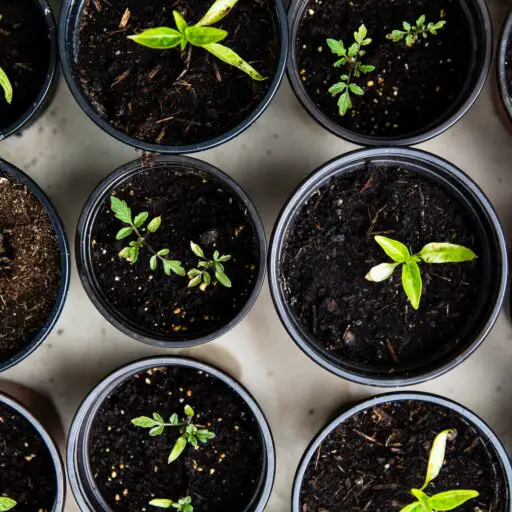Support our educational content for free when you purchase through links on our site. Learn more

Imagine a vibrant community garden, buzzing with activity and filled with lush greenery. Neighbors come together, tending to their plots, sharing gardening tips, and enjoying the fruits of their labor. It’s a place where people connect, learn, and contribute to a sustainable and thriving community. If you’re passionate about gardening and want to create a space like this in your neighborhood, you’ve come to the right place. In this comprehensive guide, we’ll walk you through the steps of creating a community garden business plan that will help you turn your vision into a reality.
Table of Contents
- Quick Answer
- Quick Tips and Facts
- Background: Cultivating the Idea
- Section 1: Planning Your Community Garden
- Section 2: Securing Land and Resources
- Section 3: Organizing Your Community
- Section 4: Designing and Building Your Garden
- Section 5: Managing and Maintaining Your Garden
- Section 6: Sustaining and Growing Your Community Garden
- FAQ
- Conclusion
- Recommended Links
- Reference Links
Quick Answer
Creating a community garden business plan involves careful planning, organizing, and executing various steps to establish a thriving garden that brings people together. It includes identifying the purpose and goals of the garden, securing land and resources, organizing the community, designing and building the garden, and managing and maintaining it. With a well-thought-out plan, you can create a sustainable and successful community garden that enriches the lives of everyone involved.
CHECK PRICE on: Garden Plot Rental | Gardening Tools | Compost Bins | Rainwater Harvesting Systems
Quick Tips and Facts
- Community gardens provide numerous benefits, including fostering community connections, promoting healthy eating, and enhancing the environment.
- A well-designed community garden can increase property values and improve the overall aesthetics of a neighborhood.
- The number of community gardens in the United States has been steadily increasing, with more people recognizing the value they bring to communities.
- Community gardens can be started in various locations, including vacant lots, schoolyards, and even rooftops.
- In addition to growing fruits and vegetables, community gardens can also include flower beds, herb gardens, and spaces for relaxation and socializing.
Background: Cultivating the Idea

Before diving into the nitty-gritty of creating a community garden business plan, let’s take a moment to explore the history and significance of community gardens. Community gardens have been around for centuries, serving as spaces for people to come together, grow food, and beautify their surroundings. These gardens have played a vital role in promoting self-sufficiency, fostering community connections, and addressing food insecurity.
Today, community gardens continue to thrive, with individuals and organizations recognizing their immense value. They provide a space for people to connect with nature, learn about gardening, and contribute to a sustainable and resilient community. By creating a community garden, you can make a positive impact on your neighborhood and create a lasting legacy for future generations.
Section 1: Planning Your Community Garden
1.1 Defining Your Purpose and Goals
To create a successful community garden, it’s essential to start with a clear understanding of your purpose and goals. Ask yourself: What do you hope to achieve with this garden? Are you primarily focused on providing fresh produce to the community, promoting education and learning, or creating a space for social interaction? Defining your purpose will guide your decision-making process and help you stay focused on your mission.
1.2 Conducting a Needs Assessment
Before diving into the logistics of creating a community garden, it’s crucial to assess the needs of your community. Conduct surveys, hold community meetings, and engage with local organizations to gather insights and feedback. Identify the specific needs and desires of your community members, such as access to fresh produce, educational opportunities, or a safe and welcoming outdoor space. This information will inform your garden’s design and programming.
1.3 Creating a Budget
Creating a budget is a crucial step in your community garden business plan. Consider all the expenses involved, including land acquisition or rental costs, infrastructure development, gardening tools, water supply, and ongoing maintenance. Explore potential funding sources, such as grants, sponsorships, or community fundraising initiatives. A well-planned budget will ensure that you have the necessary resources to bring your garden to life and sustain it in the long run.
1.4 Forming a Garden Committee
Building a strong team is essential for the success of your community garden. Form a garden committee consisting of dedicated individuals who share your passion for gardening and community development. Assign roles and responsibilities, such as garden coordinator, treasurer, and volunteer coordinator. Each member of the committee brings unique skills and perspectives, contributing to the overall success of the garden.
1.5 Developing a Garden Management Plan
A garden management plan outlines the day-to-day operations and responsibilities of the community garden. It includes guidelines for plot allocation, maintenance schedules, watering systems, pest control, and community engagement activities. By developing a comprehensive management plan, you can ensure that the garden runs smoothly and efficiently, maximizing its potential for growth and success.
Section 2: Securing Land and Resources
2.1 Identifying Potential Land
Finding suitable land is one of the most critical steps in creating a community garden. Look for vacant lots, unused schoolyards, or underutilized public spaces in your community. Approach local government agencies, schools, or religious institutions to inquire about available land. Consider factors such as accessibility, sunlight exposure, soil quality, and water availability when evaluating potential sites.
2.2 Land Acquisition or Rental
Once you’ve identified potential land, you’ll need to secure it either through acquisition or rental. If the land is publicly owned, work with local government agencies to negotiate a lease agreement. If the land is privately owned, approach the owner with your proposal and discuss the possibility of a long-term lease or purchase. Ensure that the terms of the agreement align with your garden’s goals and long-term sustainability.
2.3 Accessing Water and Other Resources
Access to water is crucial for the success of your community garden. Explore options for connecting to the municipal water supply or consider installing rainwater harvesting systems. Additionally, assess the availability of other resources such as compost, mulch, and gardening tools. Seek partnerships with local businesses, community organizations, or gardening supply stores to secure these resources at a discounted rate or through donations.
2.4 Securing Funding and Sponsorships
Funding is often a significant challenge when starting a community garden. Look for grants specifically designed for community garden initiatives or seek sponsorships from local businesses or organizations. Approach garden supply companies, nurseries, or landscaping companies for potential partnerships or donations. Engage with your community and organize fundraising events to generate additional funds. Remember, every little bit helps!
Section 3: Organizing Your Community
3.1 Engaging the Community
Building a strong and engaged community is at the heart of a successful community garden. Organize community meetings, workshops, or events to generate interest and gather input from community members. Collaborate with local schools, community centers, or social organizations to spread the word about your garden and recruit volunteers. Engaging the community from the early stages will foster a sense of ownership and ensure the garden’s long-term sustainability.
3.2 Plot Allocation and Management
One of the key attractions of a community garden is the opportunity for individuals or families to have their own plots. Develop a fair and transparent plot allocation system that considers factors such as community involvement, gardening experience, and commitment. Establish guidelines for plot maintenance, including weed control, organic gardening practices, and pest management. Regularly communicate with plot holders and provide resources and support to help them succeed.
3.3 Community Education and Outreach
Education and outreach are essential components of a community garden. Offer workshops, classes, or demonstrations on gardening techniques, composting, or sustainable practices. Collaborate with local schools to develop educational programs for students. Organize community events, such as harvest festivals or garden tours, to showcase the garden’s achievements and foster community connections. By providing educational opportunities, you empower individuals to become confident and knowledgeable gardeners.
Section 4: Designing and Building Your Garden
4.1 Garden Layout and Design
Designing your community garden involves creating a layout that maximizes space, promotes accessibility, and enhances the overall aesthetics. Consider factors such as pathways, seating areas, and communal spaces for socializing. Incorporate raised beds, vertical gardening structures, or trellises to optimize growing space. Ensure that the garden design aligns with your purpose and goals, creating an inviting and inclusive space for all community members.
4.2 Soil Preparation and Improvement
Preparing the soil is a crucial step in establishing a healthy and productive garden. Conduct soil tests to assess its composition and nutrient levels. Amend the soil with organic matter, such as compost or aged manure, to improve its structure and fertility. Consider implementing sustainable soil management practices, such as crop rotation or cover cropping, to maintain soil health in the long term.
4.3 Infrastructure and Amenities
To create a functional and enjoyable community garden, you’ll need to invest in infrastructure and amenities. Install water sources, such as faucets or rainwater harvesting systems, strategically throughout the garden. Provide storage areas for gardening tools and equipment. Consider installing seating areas, shade structures, or picnic tables to enhance the garden’s usability and encourage community interaction.
4.4 Plant Selection and Diversity
Choosing the right plants for your community garden is essential for its success. Consider the climate, soil conditions, and available sunlight when selecting plants. Aim for a diverse mix of fruits, vegetables, herbs, and flowers to cater to different preferences and needs. Encourage gardeners to experiment with heirloom varieties or native plants to promote biodiversity and sustainability.
Section 5: Managing and Maintaining Your Garden
5.1 Establishing Garden Rules and Guidelines
Clear rules and guidelines are essential for maintaining a harmonious and productive community garden. Develop a set of garden rules that outline expectations for plot holders, including guidelines for maintenance, pest control, and organic gardening practices. Communicate these rules effectively and regularly enforce them to ensure a positive and inclusive garden environment.
5.2 Volunteer Management and Engagement
Volunteers play a crucial role in the success of a community garden. Develop a volunteer management system that allows individuals to contribute their time and skills effectively. Offer training sessions or workshops to educate volunteers on gardening techniques or specific tasks. Recognize and appreciate the efforts of volunteers through events, certificates, or other forms of acknowledgment.
5.3 Garden Maintenance and Upkeep
Regular maintenance is essential to keep your community garden thriving. Develop a maintenance schedule that includes tasks such as weeding, watering, and pest control. Encourage plot holders to take responsibility for their plots and contribute to the overall cleanliness and tidiness of the garden. Organize regular workdays or volunteer events to tackle larger maintenance projects and foster a sense of community.
5.4 Community Engagement and Events
Engaging the community is an ongoing process that requires consistent effort. Organize community events, workshops, or educational programs to keep community members involved and excited about the garden. Collaborate with local organizations or schools to host joint events or initiatives. Regularly communicate with the community through newsletters, social media, or a dedicated website to keep them informed and engaged.
Section 6: Sustaining and Growing Your Community Garden
6.1 Evaluating and Adapting
Regular evaluation is crucial to ensure the long-term sustainability and growth of your community garden. Assess the garden’s progress, identify areas for improvement, and adapt your strategies accordingly. Seek feedback from community members, plot holders, and volunteers to understand their experiences and suggestions. By continuously evaluating and adapting, you can create a garden that meets the evolving needs of your community.
6.2 Building Partnerships and Collaborations
Collaborating with other organizations or businesses can provide valuable resources and support for your community garden. Seek partnerships with local schools, restaurants, or food banks to create mutually beneficial relationships. Explore opportunities for joint projects, such as educational programs or community outreach initiatives. By building strong partnerships, you can expand the reach and impact of your garden.
6.3 Celebrating Achievements and Milestones
Celebrate the achievements and milestones of your community garden to recognize the hard work and dedication of everyone involved. Organize harvest festivals, garden tours, or community gatherings to showcase the garden’s successes. Highlight individual achievements, such as the largest harvest or the most creative plot design. By celebrating together, you strengthen the sense of community and inspire others to get involved.
FAQ

How do I start a community garden business?
Starting a community garden business involves careful planning, organizing, and executing various steps. Begin by defining your purpose and goals, conducting a needs assessment, and creating a budget. Form a garden committee, develop a garden management plan, and secure land and resources. Engage the community, allocate plots, and provide education and outreach. Design and build your garden, establish rules and guidelines, and ensure proper maintenance and management. Continuously evaluate and adapt your strategies to sustain and grow your community garden business.
How many people does it take to run a community garden?
The number of people required to run a community garden depends on its size and complexity. A small community garden may only require a handful of dedicated individuals, while a larger garden may need a more extensive team. Ideally, you should have a garden committee consisting of individuals with diverse skills and expertise. This committee can oversee various aspects of the garden, such as administration, finance, volunteer management, and community engagement.
Read more about “How do I Advocate for a Community Garden? …”
What should be included in a community garden?
A community garden should include various elements to cater to the needs and interests of the community. It should have designated plots for individuals or families to grow their own produce. Additionally, it should provide communal spaces for socializing, educational programs, and events. Access to water sources, storage areas for tools, and amenities such as seating areas or shade structures are also important. The garden should be designed to promote accessibility, biodiversity, and sustainability.
Read more about “Is a Community Garden a Place People Can Go? …”
What is a good size for a community garden?
The size of a community garden depends on the available land and the needs of the community. A small community garden can consist of a few raised beds or individual plots, while a larger garden may encompass several acres. Consider factors such as the number of potential gardeners, the available resources, and the desired level of community engagement when determining the size of your garden. It’s important to strike a balance between providing enough space for individuals and maintaining a sense of community.
Read more about “What is a good size for a community garden?”
Conclusion

Creating a community garden business plan is an exciting and rewarding endeavor. By following the steps outlined in this guide, you can establish a thriving garden that brings people together, promotes sustainable practices, and enriches the lives of your community members. Remember, the success of your community garden depends on careful planning, strong community engagement, and ongoing maintenance. With dedication and passion, you can create a space where people can grow together and reap the rewards of their collective efforts.
We hope this guide has provided you with the knowledge and inspiration to embark on your community garden journey. If you have any further questions or need additional guidance, don’t hesitate to reach out to us at Community Gardening™. Happy gardening!
Recommended Links
- Benefits of Community Gardens
- Community Garden Events
- Community Garden Policies
- Garden Design Ideas
- Therapeutic Benefits of Gardening
- Can You Really Make Money From a Backyard Garden? 2024

